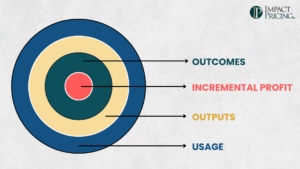Question: Hi Mark, loving your blog posts and answers to the questions you receive. I have a question I’d love to see you cover which is, what best practice principles/methodologies do you see for approaching global pricing? i.e. pricing in different global territories? Specifically in a B2B space. Hope that’s clear and would love to know your thoughts! Thanks. -Craig
Answer: Craig, thank you for the compliment. Global pricing is another one of those HUGE topics. Although I’m sure you had something specific in mind, here are a few general answers.
The WTP (Willingness to pay)
First and most important, different regions have different WTP (Willingness to pay) which means you should be charging different prices. This difference in WTP is driven by many factors: regulations, competitors in the region, currency valuations, taste, brand recognition and sometimes even the problems solved are different.
The Problems
One big problem with regional pricing is often arbitrage, someone buys in one low price region and then resell in a higher priced region. This is sometimes called the gray market. You want to watch for this and try to control it as much as possible. Different industries use different mechanisms.
Another problem is multinational customers. One way to handle these is to know the customer well. If they have a centralized purchasing organization, then you will sell to them worldwide at one price. However, if their purchasing is decentralized, then you can sell at different prices to different regions. That means inside your own company, you need to keep track of which companies are centralized.
Solutions
What do you do when a decentralized company decides to centralize and realizes you’ve been selling them the same thing at different prices? You apologize and offer to match the lowest price for all of their purchases. From an optimistic perspective, you were able to achieve higher ASPs for a period of time. Be grateful for the past and accept the present situation.
Another big gotcha is currency fluctuations. The answer to this depends on several things. You can only sell in USD, which means you force your buyers to take any currency risk. However, your competitors are probably not doing that. They are probably pricing in the local currency. Assume your product is competitive at a 10% premium. Then the currency fluctuates yet your competitor doesn’t raise the price (maybe because it’s manufactured locally). If you change your price then you become less (or more) competitive. My preference is to price in the local currency and when fluctuations happen, make a decision based on what your buyers will see. Your company is probably big enough to absorb a little currency risk.
Readers, what other global pricing issues do you run into and how do you handle them?
**Note: Mark Stiving has an active LinkedIn community, where he participates in conversations and answers questions. Each week, he creates a blog post for the top question. If you have a question, head over to LinkedIn to communicate directly with Mark.**














